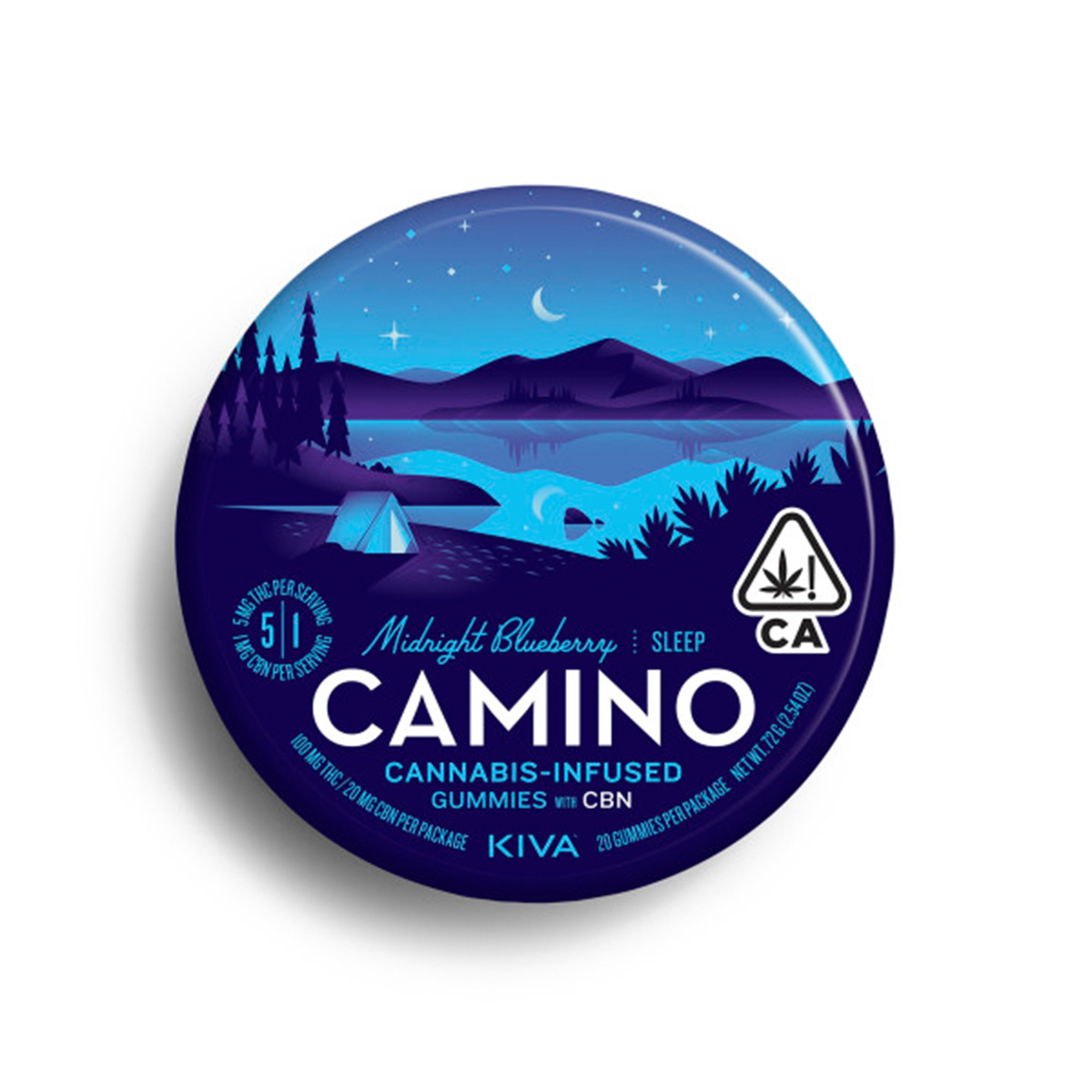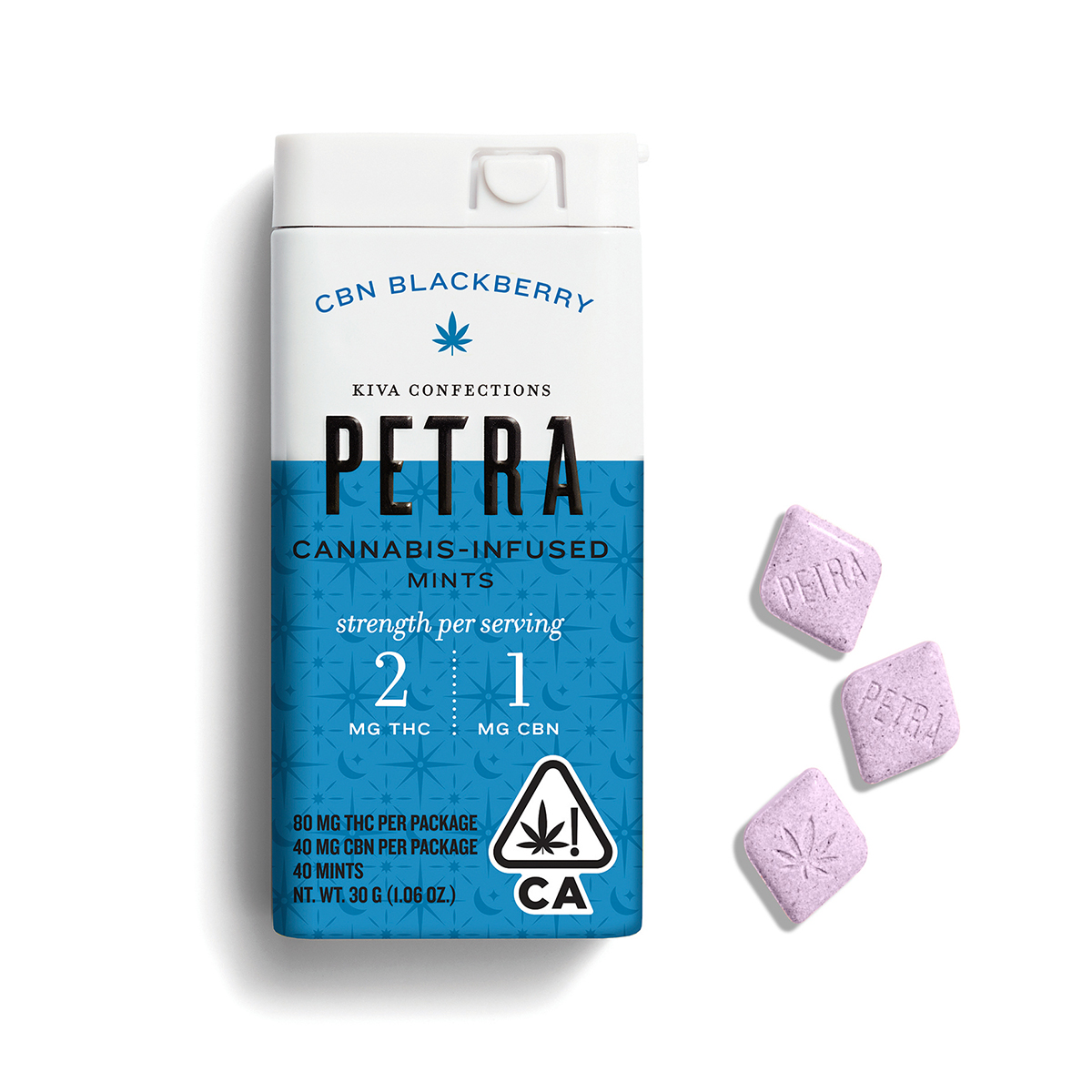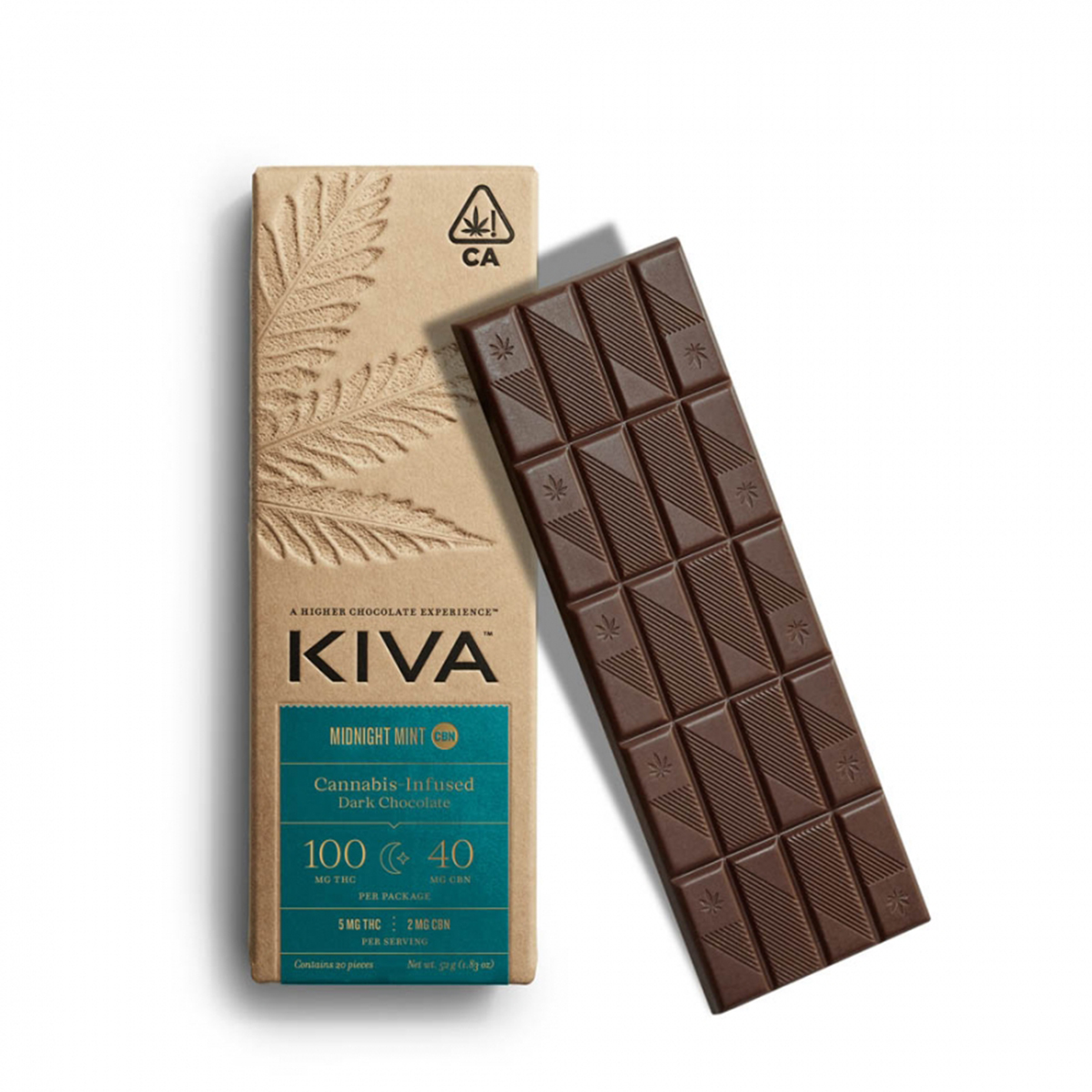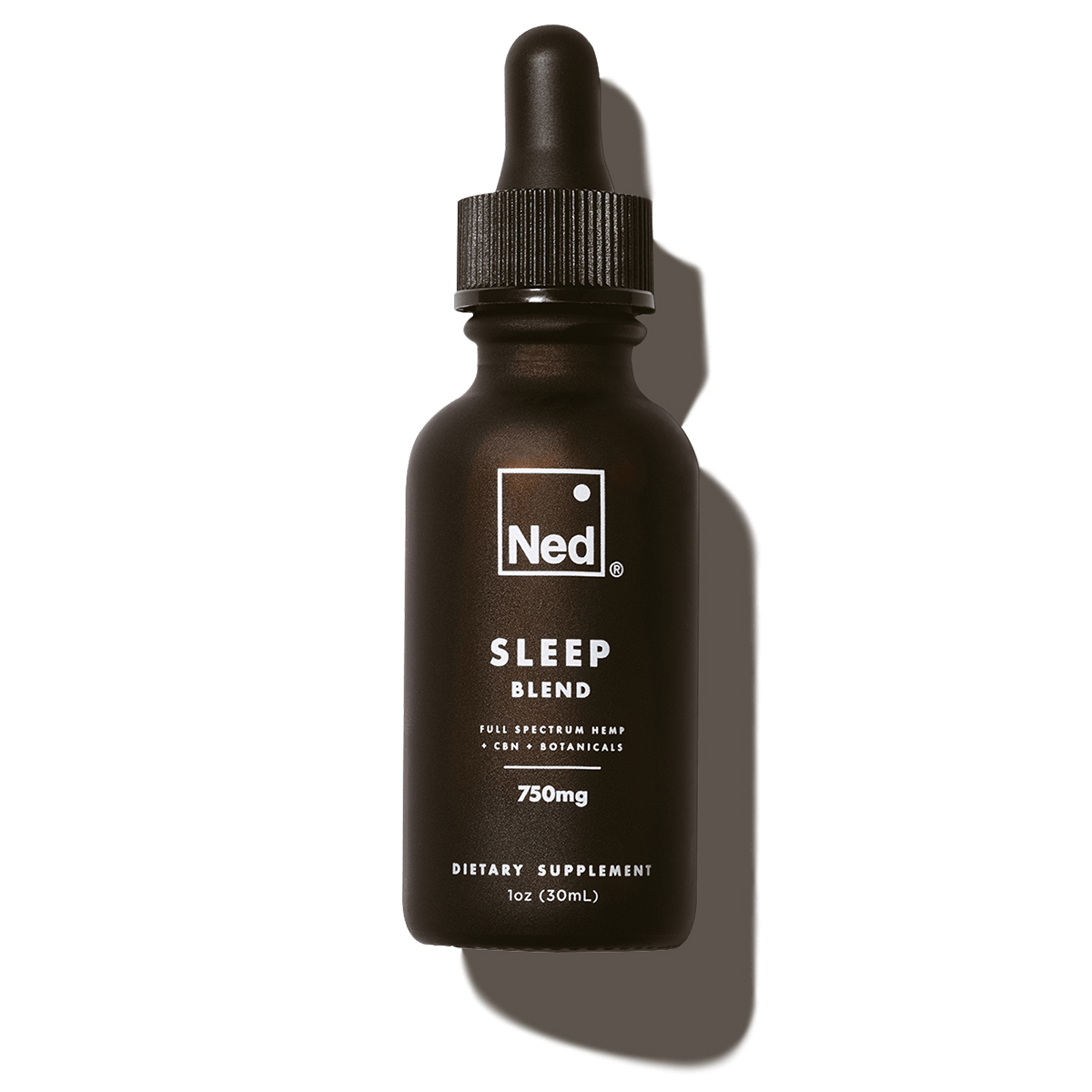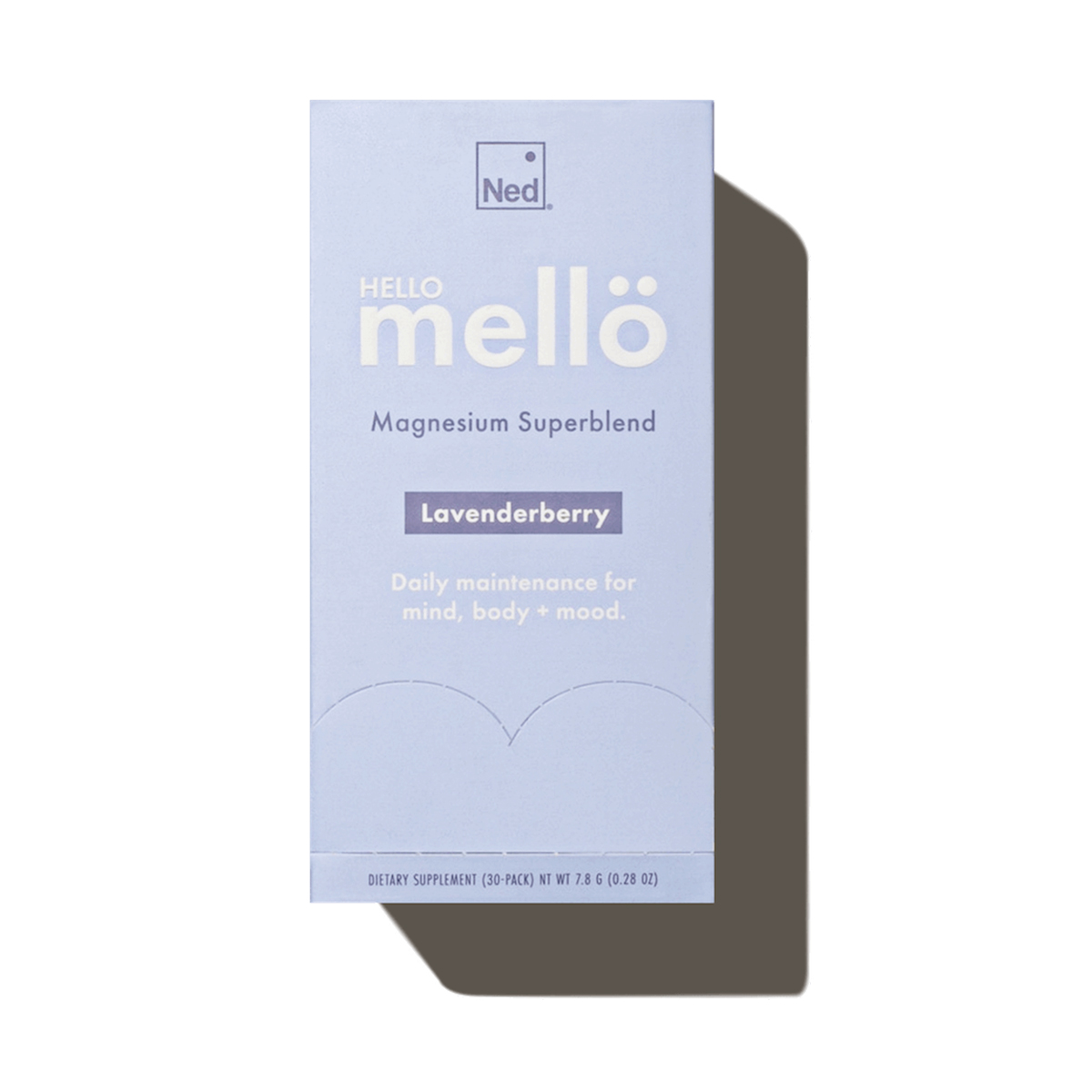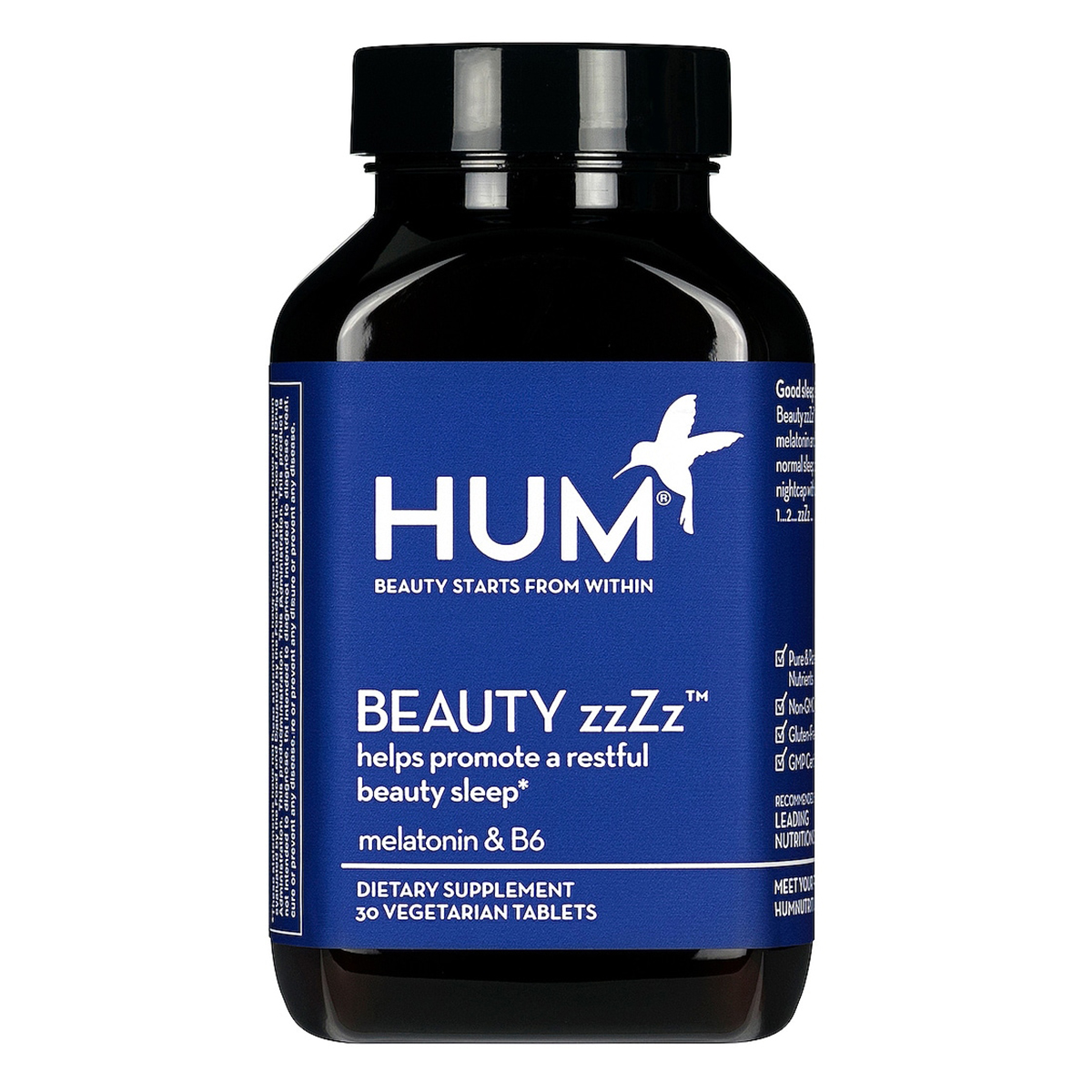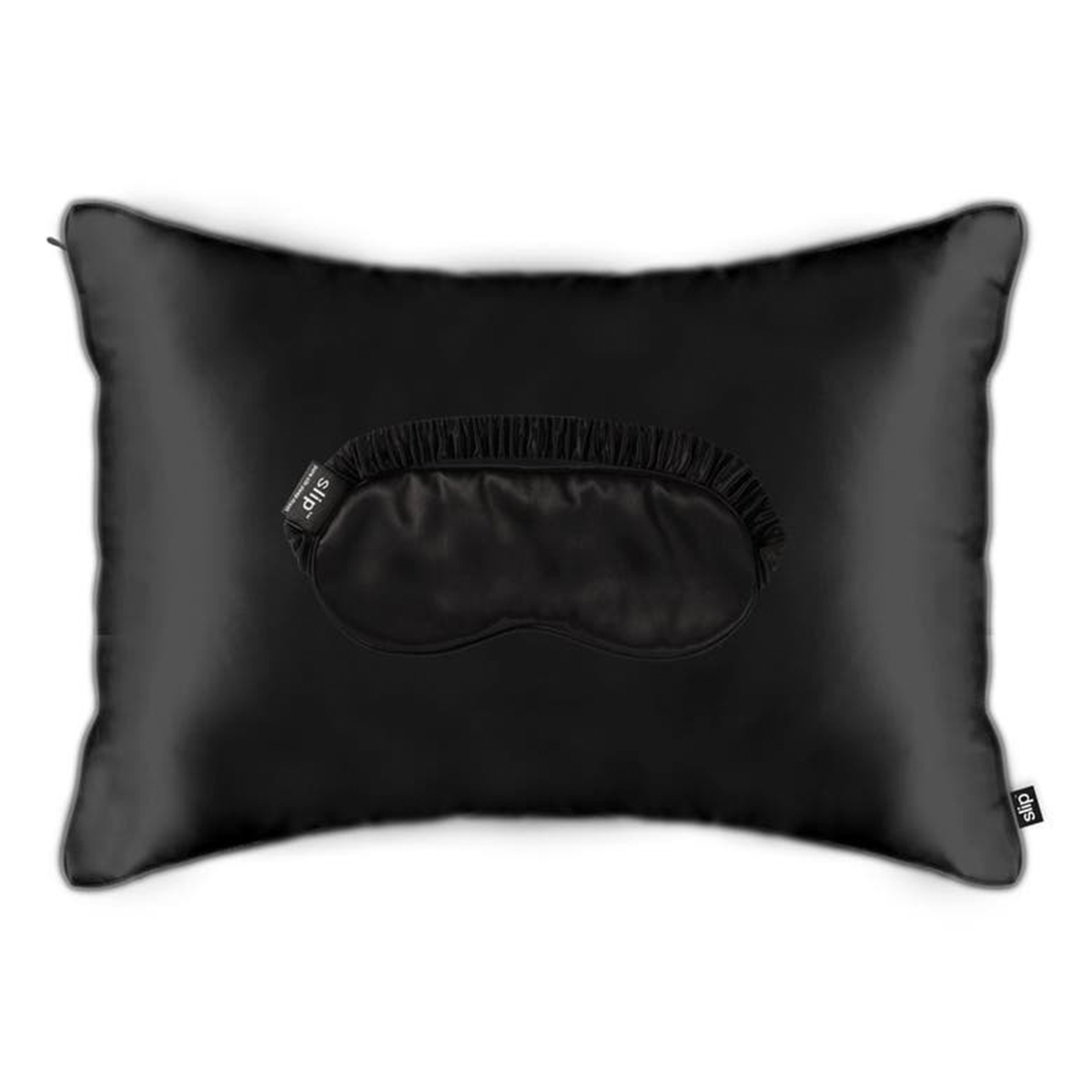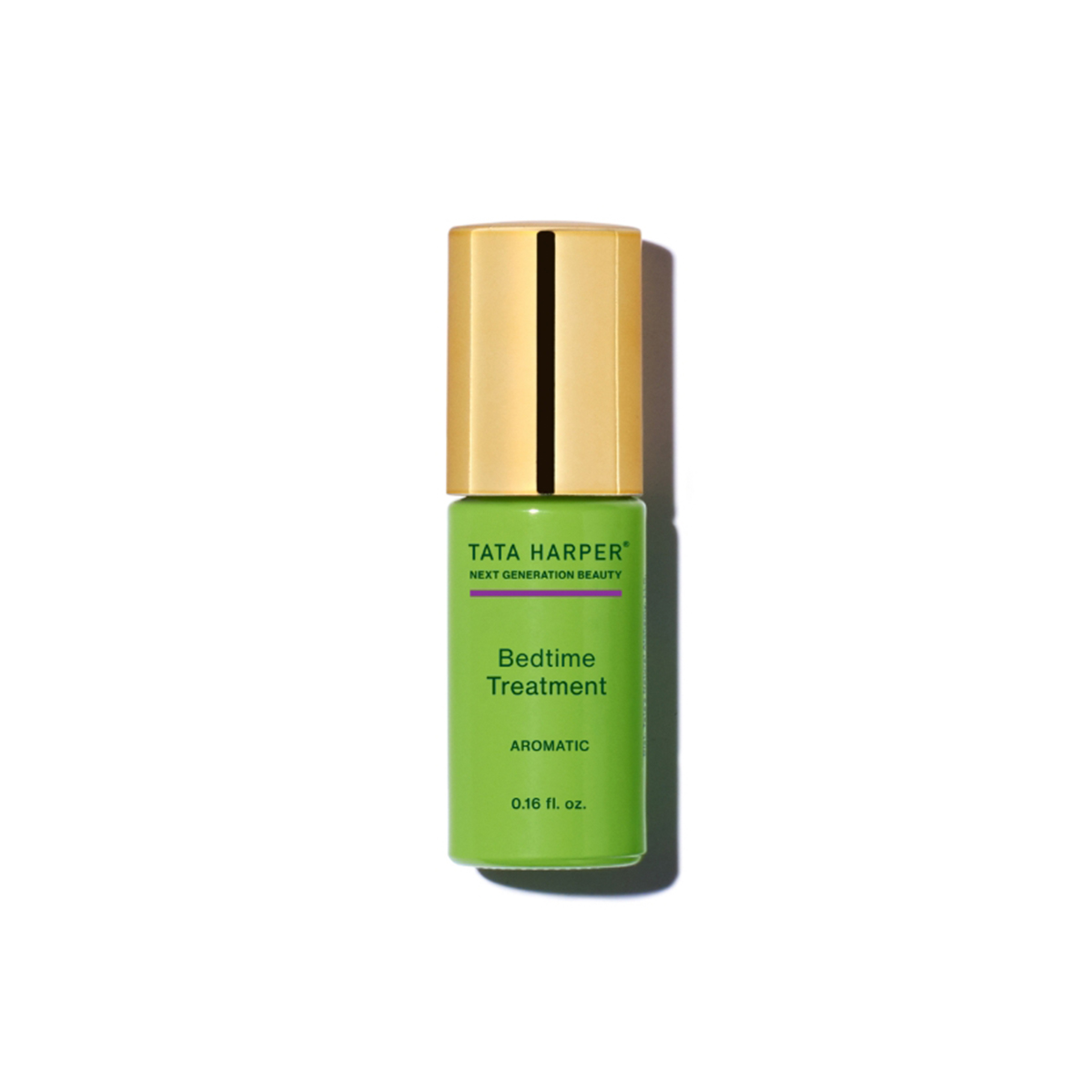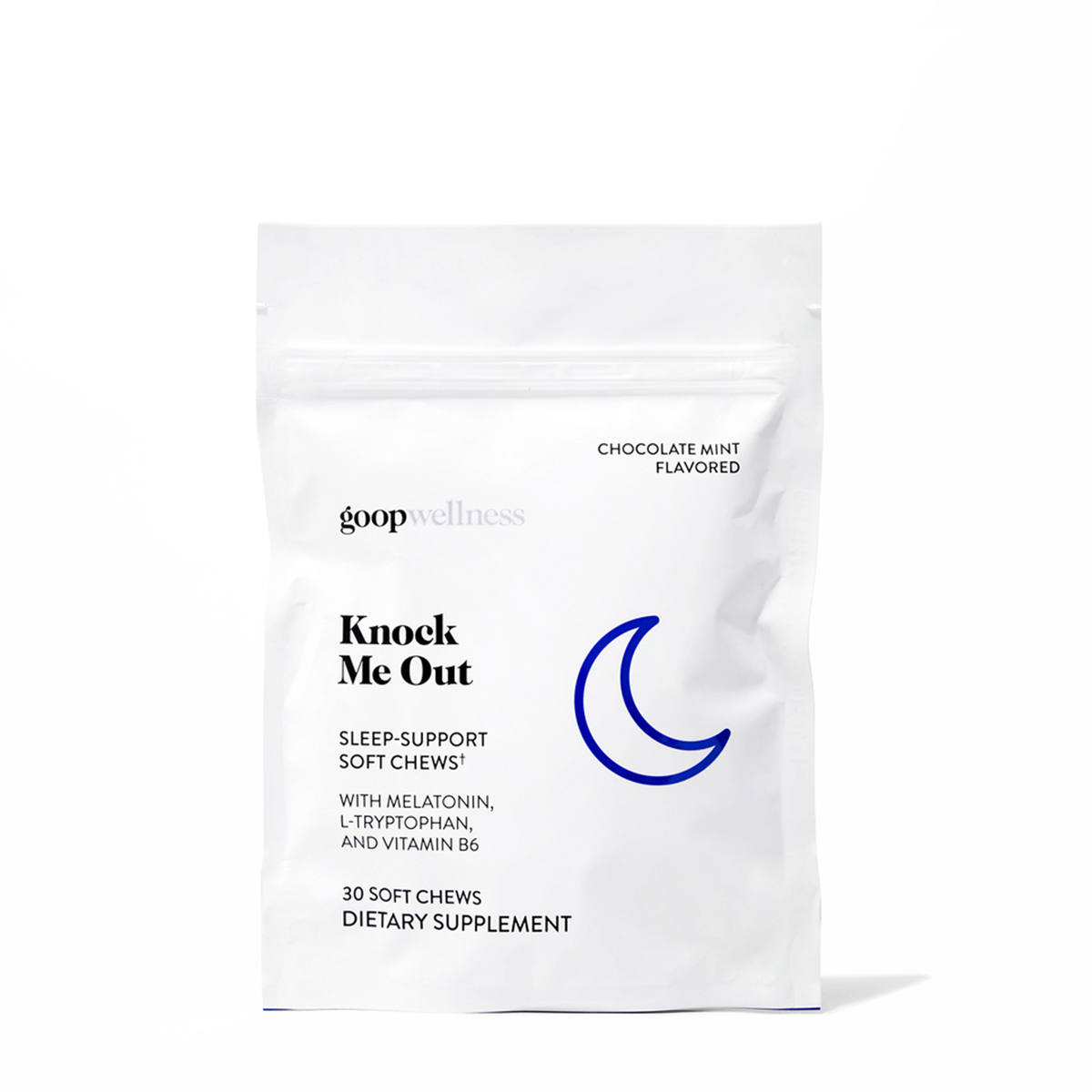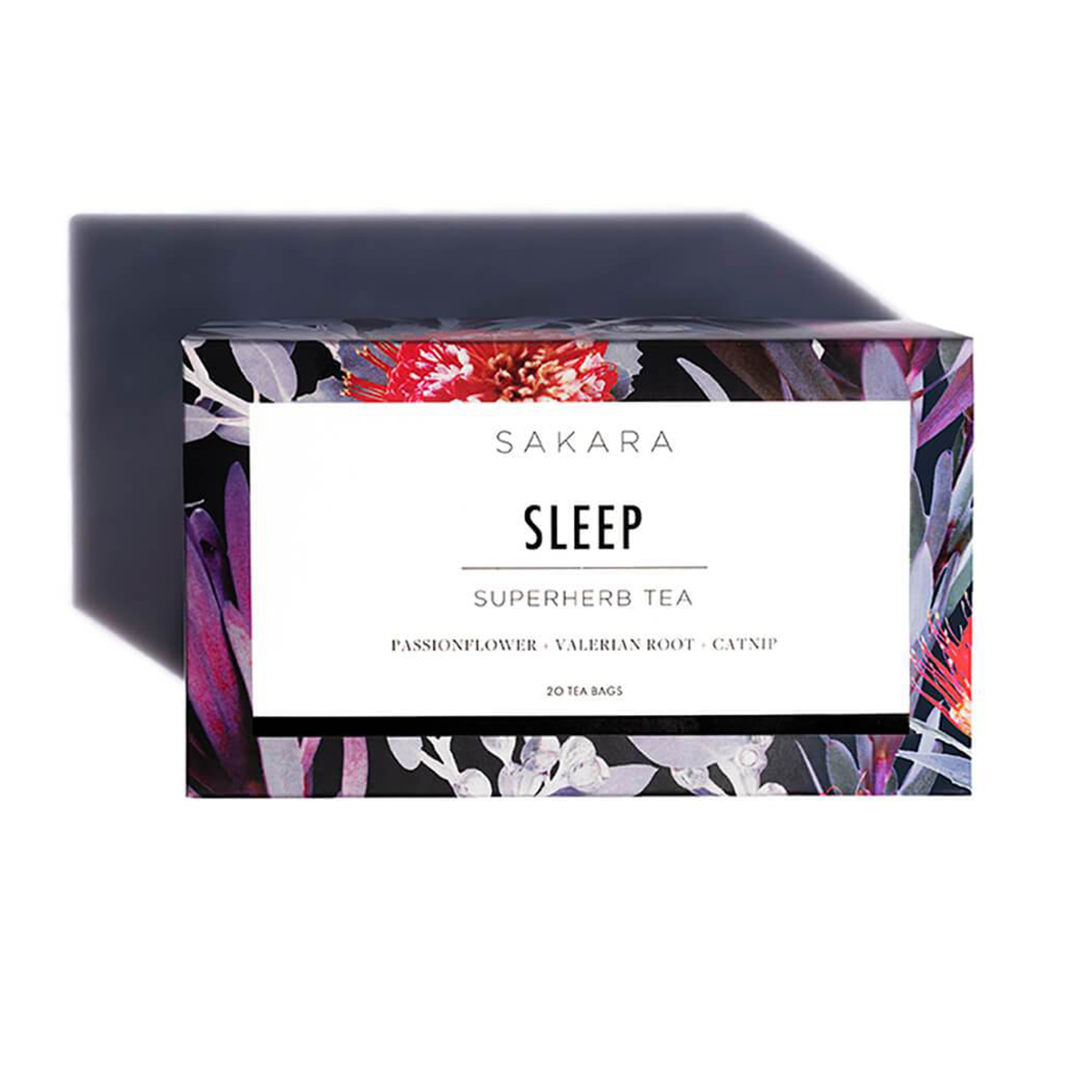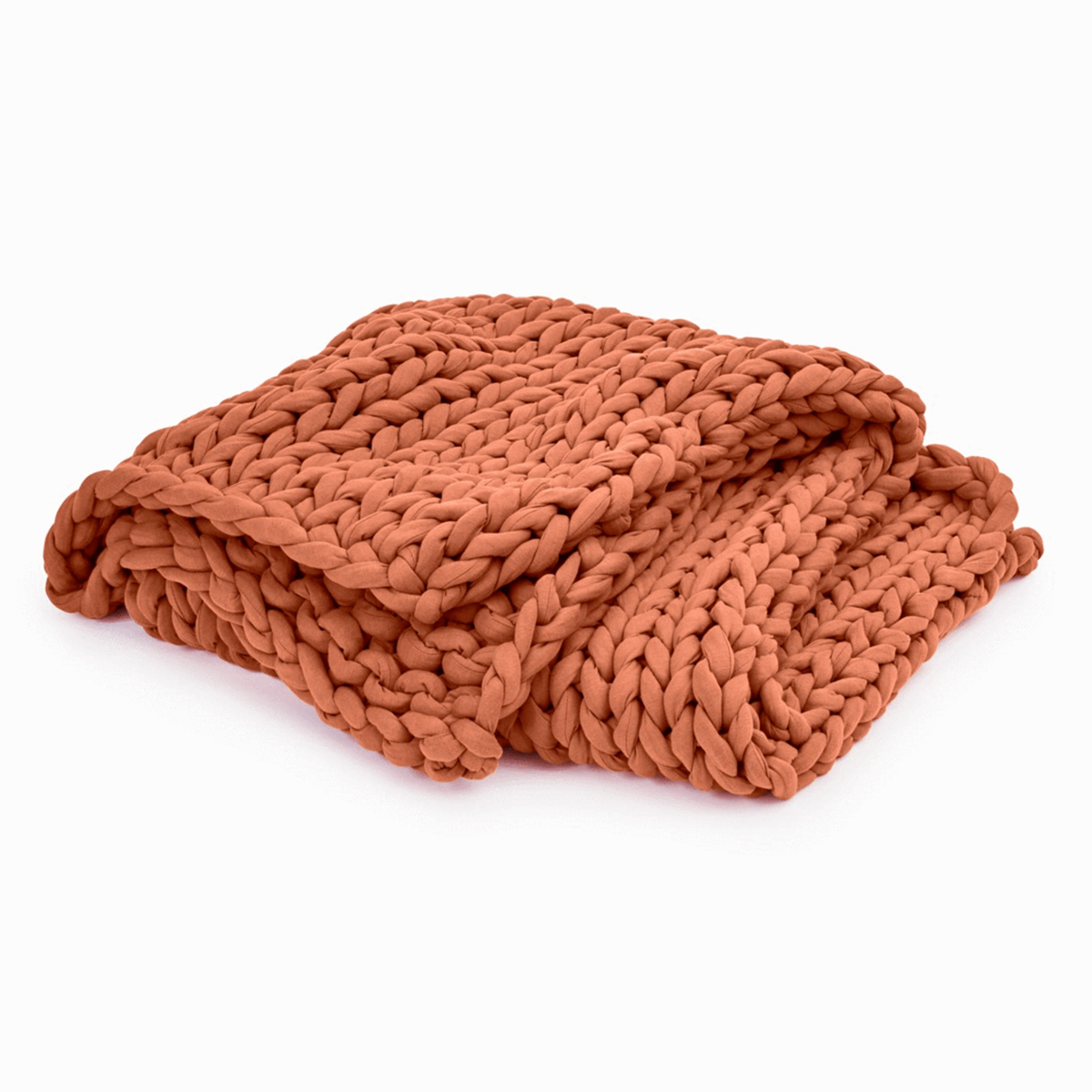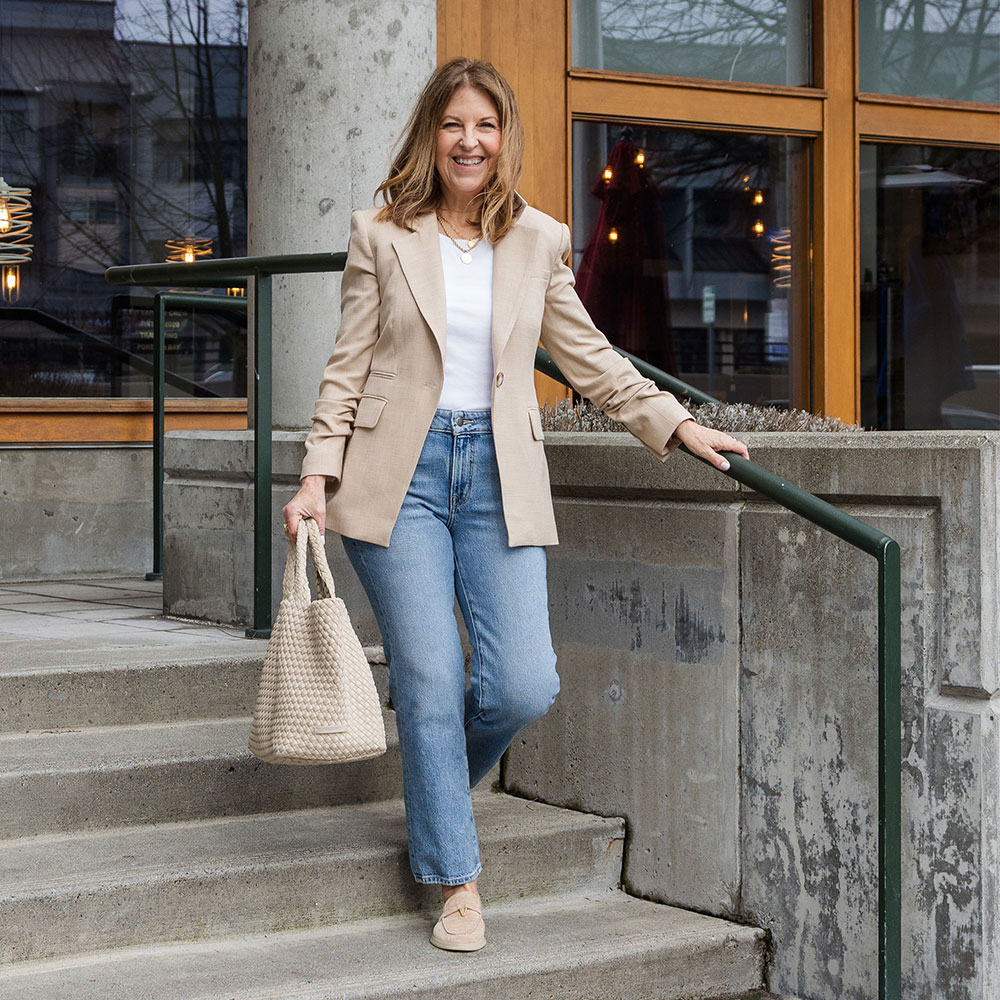I Swapped Out CBD for CBN, and Now I'm Finally Getting the Best Sleep of My Life
It's not terribly often I sit down to write an article and begin by recalling a recent trip to my local dispensary. Alas, here I am, and that's what's about to go down! But first, a little context. If you've been reading my content for a while, you already know that I'm pretty transparent when it comes to my issues with sleep and insomnia. If you're new here, then now you know (and welcome!).
My tumultuous relationship with sleep ebbs and flows, but prior to a couple of months ago, I'd typically log four or five hours of only semi-decent sleep per night. I felt perpetually exhausted, emotionally fragile, and irritable, and my lack of sleep even threw my hormones out of whack, which triggered a whole new slew of symptoms. To get any sleep at all, I maintained a yo-yo diet consisting of Unisom, ZzzQuil, melatonin, and countless other tinctures, capsules, medications, and powders touting supposed sleep benefits. My body felt like it was running on fumes, and nothing I tried seemed to make a huge difference. I was frustrated, tired, and a tad bit panicked.
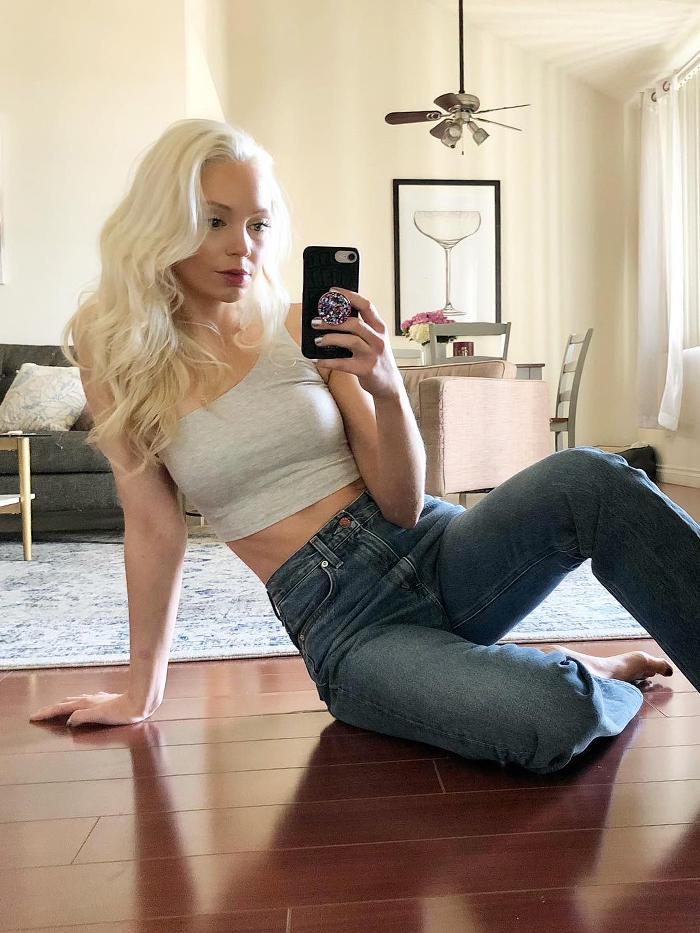
But then, I experienced a little bit of relief. After spending almost all of 2020 isolated and in L.A., I was able to get away and stay with my family in Arizona for the holidays and the better part of four months this past October, November, December, and January. Since I'm an early bird and typically wake up anywhere between 5:30 a.m. and 6:30 a.m., I began a stringent new sleep schedule—in bed at 9 p.m. and lights out at 10 p.m. I did everything I could to reduce and block blue light, especially in the hours right before bed; I began going for runs before work and walks after work (to help with energy, stress, and realigning my circadian rhythm); my new weighted blanket practically became my religion; I cut back on caffeine; and I began doing research on sleep supplements other than my crash diet of sleeping pills. Lo and behold, I stumbled upon CBN—CBD and THC's lesser-known cousin—and once I returned to L.A., I turned to Kiva Confections, the number one edibles brand in the country, for some help. I began working one of the brand's Camino Midnight Blueberry Gummies ($18), which combines five milligrams THC and one milligram CBN, into my nightly routine an hour or two before I wanted to hit the hay, and I haven't looked back. Since then, I've also added its Midnight Mint Dark Chocolate CBN Bar ($27) into the mix—just one square and not in combination with the gummies—as needed, and the results have been dramatic. Of course, I've kept all of my other rituals (weighted blanket, less caffeine and blue light, an early bedtime, etc.), but for the first time since college or even high school, I've been getting seven to eight hours of sleep every. dang. night.
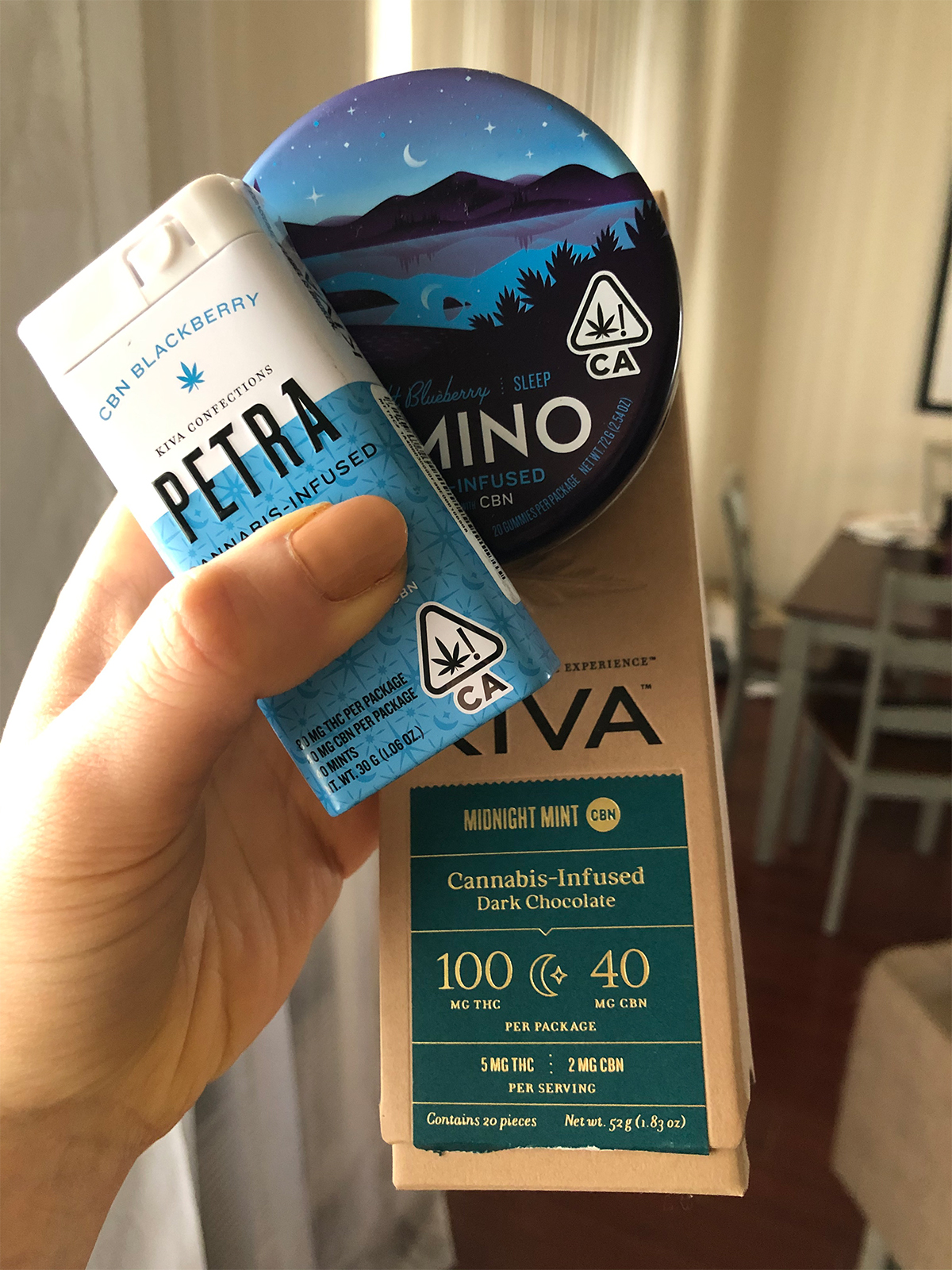
So now that I'm hooked on CBN for its potential sleep-enhancing benefits, I decided to do a deep dive on the topic with some help from Kristi Palmer, co-founder of Kiva Confections. Keep scrolling! Below, we're covering everything to know about CBN and explaining how it's different from THC and CBD. Oh, and please note that my luck with CBN in regard to sleep doesn't mean it will work the same way for everyone. As with any type of supplement or cannabinoid, it's always good to discuss your options and personal needs or goals with a trusted medical professional before adding anything new to your routine.
What is CBN?
According to Palmer, CBN (which is short for cannabinol) is a lesser-known cousin of the more famous cannabinoids THC and CBD. I could spend about 20 minutes going very Bill Nye the Science Guy on you, but in a nutshell, cannabinoids are chemical compounds that, along with terpenes (other active chemicals in the plant), create some of cannabis's most well-known effects. Though there is some debate on the matter, CBN is considered to be a nonintoxicating compound that is, quite interestingly, created as THC ages. Because of this, high amounts of CBN are usually found in older cannabis. Its major claim to fame is promoting restful and restorative sleep, especially when it's combined with THC. This is why you'll often find CBN married with THC on the edibles market, and you might also see it paired with CBD.
How is CBN different than other cannabinoids like CBD and THC?
As I started to explain above, one of the biggest differentiating factors between CBN and other cannabinoids is that THC actually converts to CBN when it's oxidized, which is why aged flower often has larger amounts of CBN. That said, Palmer points out that CBN doesn't necessarily produce the same psychoactive high that THC is known for. There is some debate, however, and more research is definitely needed. For instance, some reports show that, similar to CBD, CBN is nonintoxicating, and other research shows it does produce a mild THC-like high. The takeaway? Experimenting with any type of cannabinoid is highly subjective, so tread carefully, start in small doses, read the directions, and prepare for a light high. (You most likely won't experience a reaction, but it's better to expect it than be surprised after the fact.) Because I always take CBN at night and because the products I take usually include a tiny bit of THC, it's hard to determine whether any type of high I feel can be attributed to the CBN or the other cannabinoids. Plus, I'm usually fast asleep by the time any type of effect would be felt. Palmer recommends reading up (here and here) if you're looking for more information on CBN and potential psychoactivity.
What are the potential benefits of taking CBN?
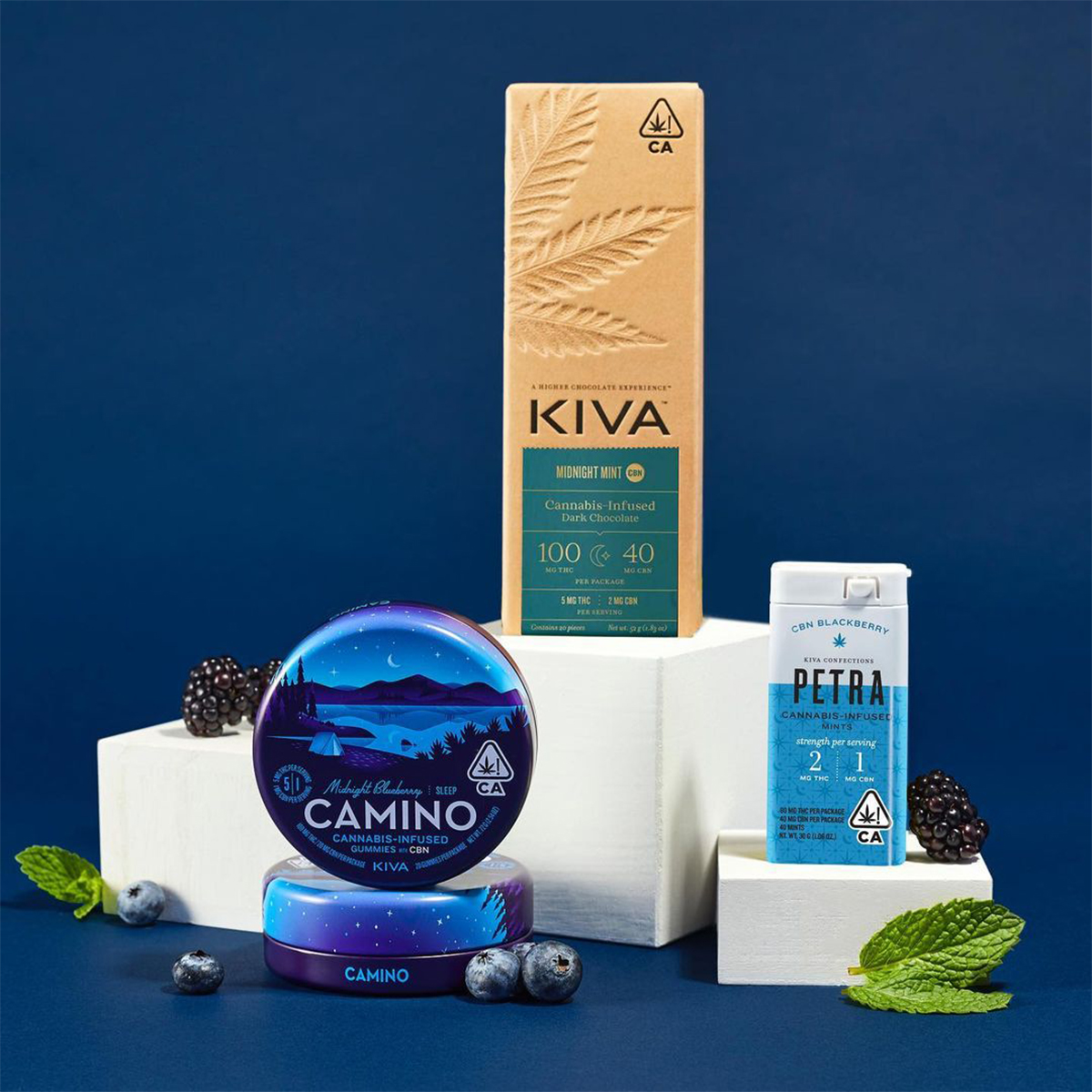
According to Palmer, cannabis's ability to support and promote better sleep is one of its three most popular uses. "Based on existing CBN research and our own internal studies, we found that CBN-infused edibles offer a particularly tranquil experience for users and can be a great alternative to other options on the market. Many supplements, for instance, and even other cannabis products contain melatonin, which is contraindicated for many groups and medications and can cause adverse effects," she says. Therefore, if you're looking for a better night's sleep and a more natural alternative to sleeping pills and other medications but want to avoid popular picks like melatonin, CBN might be worth a try.
How long do the effects of CBN last, and are there any side effects or risks?
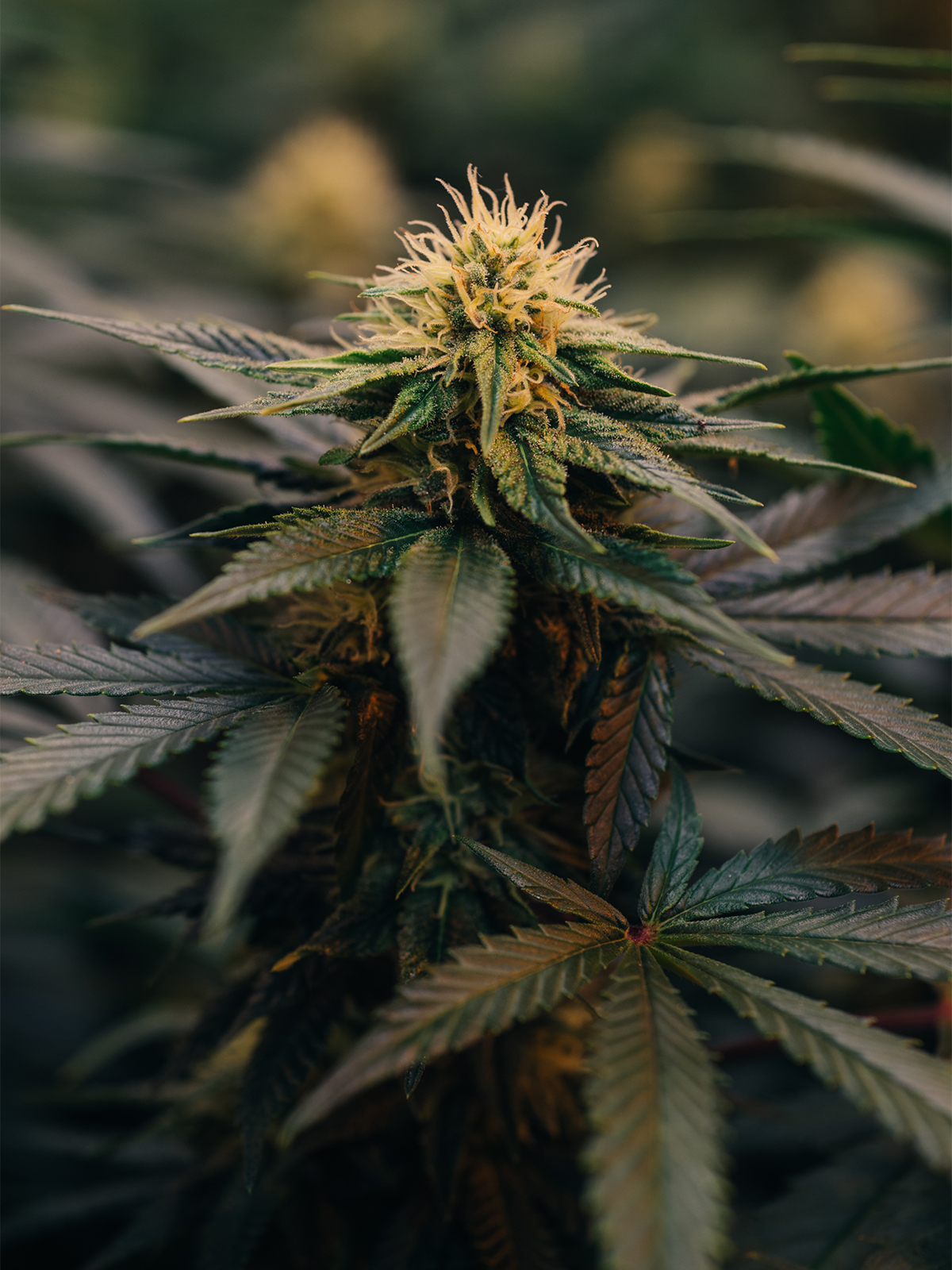
Again, the effects of cannabis are incredibly subjective, and as Palmer points out, one person's metabolism, tolerance, and endocannabinoid system are not the same as another person's. That being said, since edibles are digested in the stomach, she says you can definitely expect a longer duration of effects than when smoking cannabis. As far as potential risks and side effects, it's always, always, always a good idea to talk with your doctor before trying any kind of cannabis product—be it CBD, THC, or CBN.
"From my personal experience, the greatest risk most people have is eating too many edibles and having an overwhelming experience," shares Palmer. "The good news is that it always passes. Cannabis is remarkably safe when used in moderation. We always recommend starting with one serving and waiting two hours before eating more. Start low, go slow—that's the unofficial edibles motto!"
Additionally, since CBN is a newer cannabinoid on the block, it's essential you purchase your products at a legal, licensed dispensary where there are robust safety and sourcing standards.
Who should and/or shouldn't take CBN?
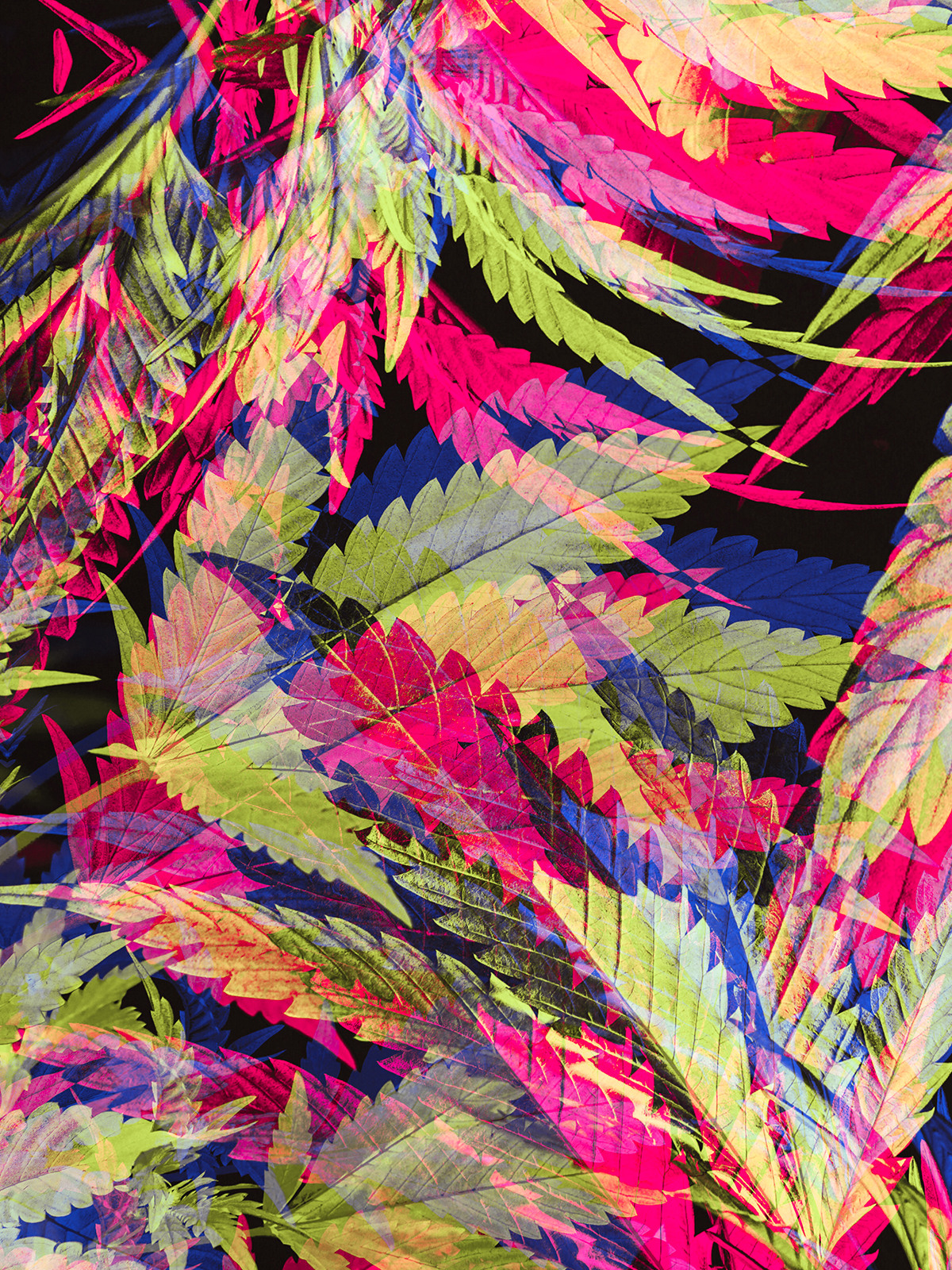
As with any edible, Palmer recommends starting with a low dose (one or two milligrams max) of a CBN-infused product to see if you enjoy and/or notice the effects. "A low starting dose can help you get acquainted with a new cannabinoid and get you off to a great start in determining your perfect dose. The only people I recommend avoiding really any cannabis product are those who are intoxicated with alcohol. Alcohol and cannabis exacerbate each other's side effects and can make for a really uncomfortable experience," she adds.
When is the best time to take CBN, and can CBN be combined with CBD and/or THC?
Since the hero benefit of CBN revolves around its sedative, sleep-enhancing benefits, all of Kiva's CBN-infused products (and pretty much all of the others I've seen or tried on the market) are formulated to promote restful sleep and, therefore, should be taken anywhere between 30 minutes to two hours before you lie down. Again, prepare for some trial and error here, and make sure you're in a safe and comfortable space before you take your dose.
As far as combining cannabinoids, Palmer notes that studies have shown CBN produces more of a sedative effect when it's combined with THC. "Cannabis is such a personalized form of medicine," continues Palmer. "Tolerance is a huge variable, and the perfect product for one person may leave another wanting. For this reason, we released several unique formulations and products to provide a wide array of options for people. For instance, our Midnight Mint Kiva Bar ($27) contains five milligrams of THC and two milligrams of CBN for people who need a stronger effect. Midnight Blueberry Camino Gummies ($18) contain five milligrams of THC and only one milligram of CBN, and our Petra Blackberry CBN Mints ($16) contain two milligrams of THC and one milligram of CBN."
Shop More Products I've Found Helpful for Healthy Sleep
Erin has been writing a mix of beauty and wellness content for Who What Wear for over five years. Prior to that, she spent two and half years writing for Byrdie. She now calls Santa Monica home but grew up in Minnetonka, Minnesota, and studied writing, rhetoric, and communication at University of Wisconsin, La Crosse. She studied abroad in Galway, Ireland, and spent a summer in L.A. interning with the Byrdie and Who What Wear family. After graduating from UW, she spent one year in San Francisco, where she worked as a writer for Pottery Barn Kids and PBteen before moving down to L.A. to begin her career as a beauty editor.
-
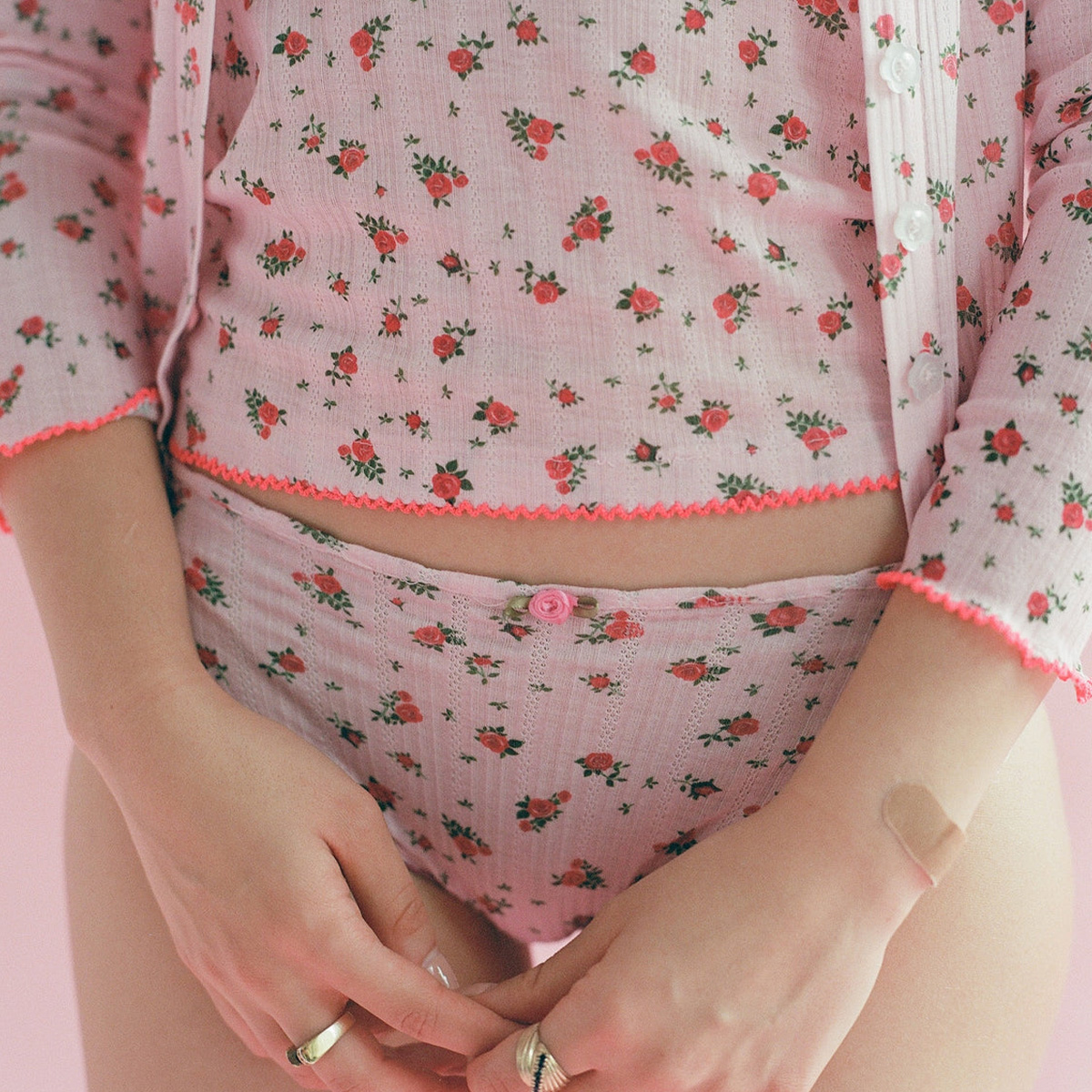 Camisoles! Boxers! Baby Tees! 31 Comfy Under-$50 Finds Perfect for Lazy Summer Weekends
Camisoles! Boxers! Baby Tees! 31 Comfy Under-$50 Finds Perfect for Lazy Summer WeekendsComfy, cozy, cute.
By Ana Escalante
-
 PSA: I Will Now Be Living in These Pajamas All Winter
PSA: I Will Now Be Living in These Pajamas All WinterThey're cozy and chic.
By Humaa Hussain
-
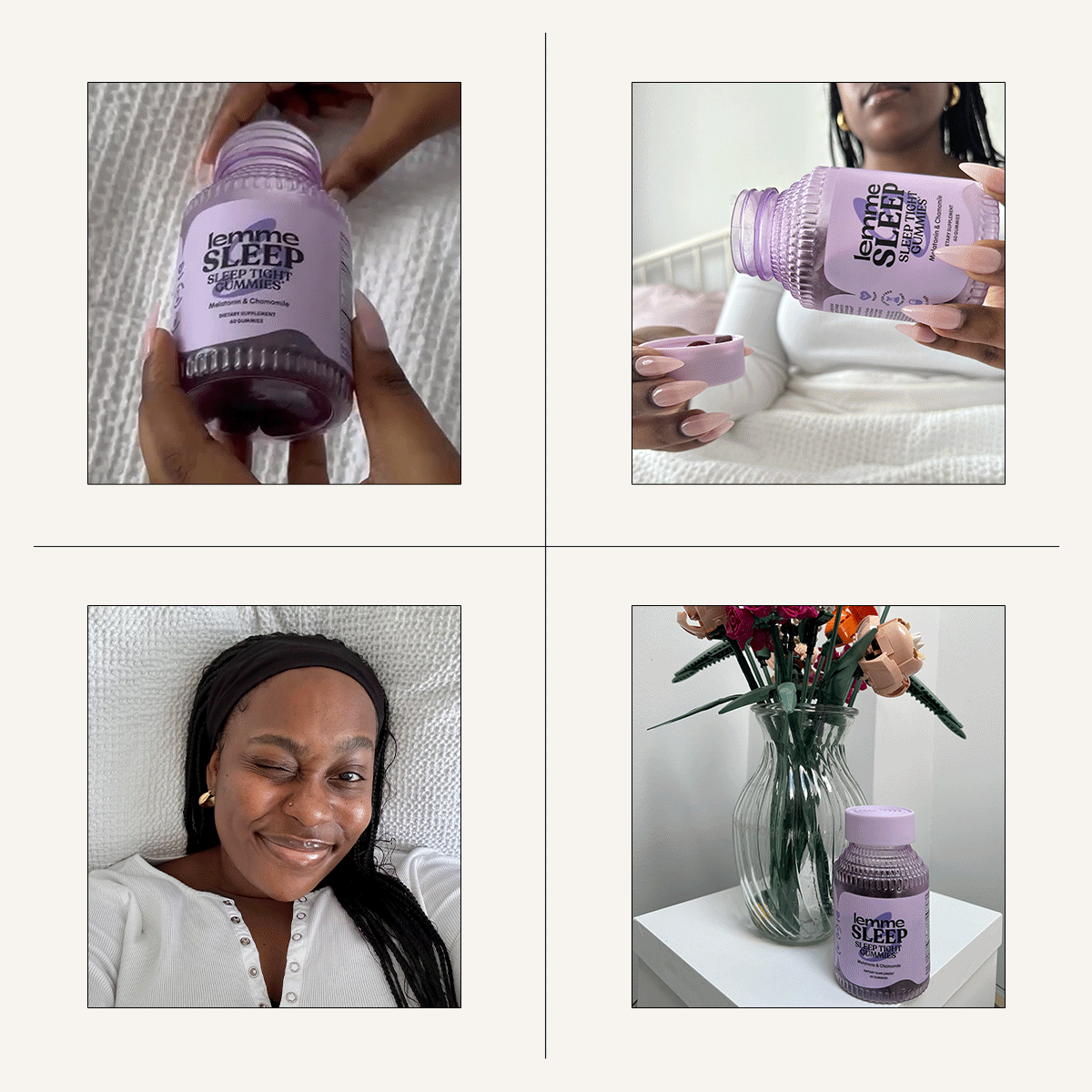 I Impulse Bought These Celebrity Sleep Gummies at 3 A.M.—I Regret Nothing
I Impulse Bought These Celebrity Sleep Gummies at 3 A.M.—I Regret NothingLemme explain.
By Aniyah Morinia
-
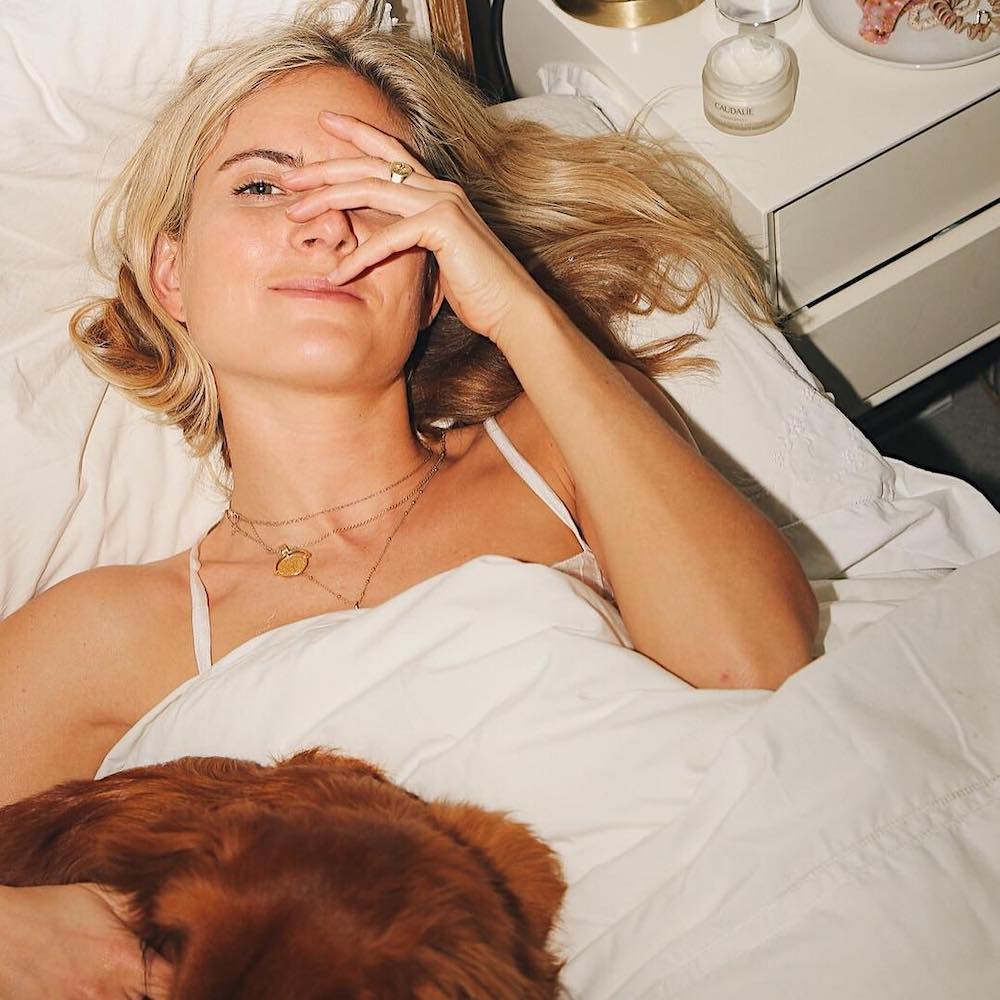 I Thought Nightgowns Were Fussy, But These Stylish Ones Are Changing My Mind
I Thought Nightgowns Were Fussy, But These Stylish Ones Are Changing My MindThese are not your grandmother's pajamas.
By Jennifer Camp Forbes
-
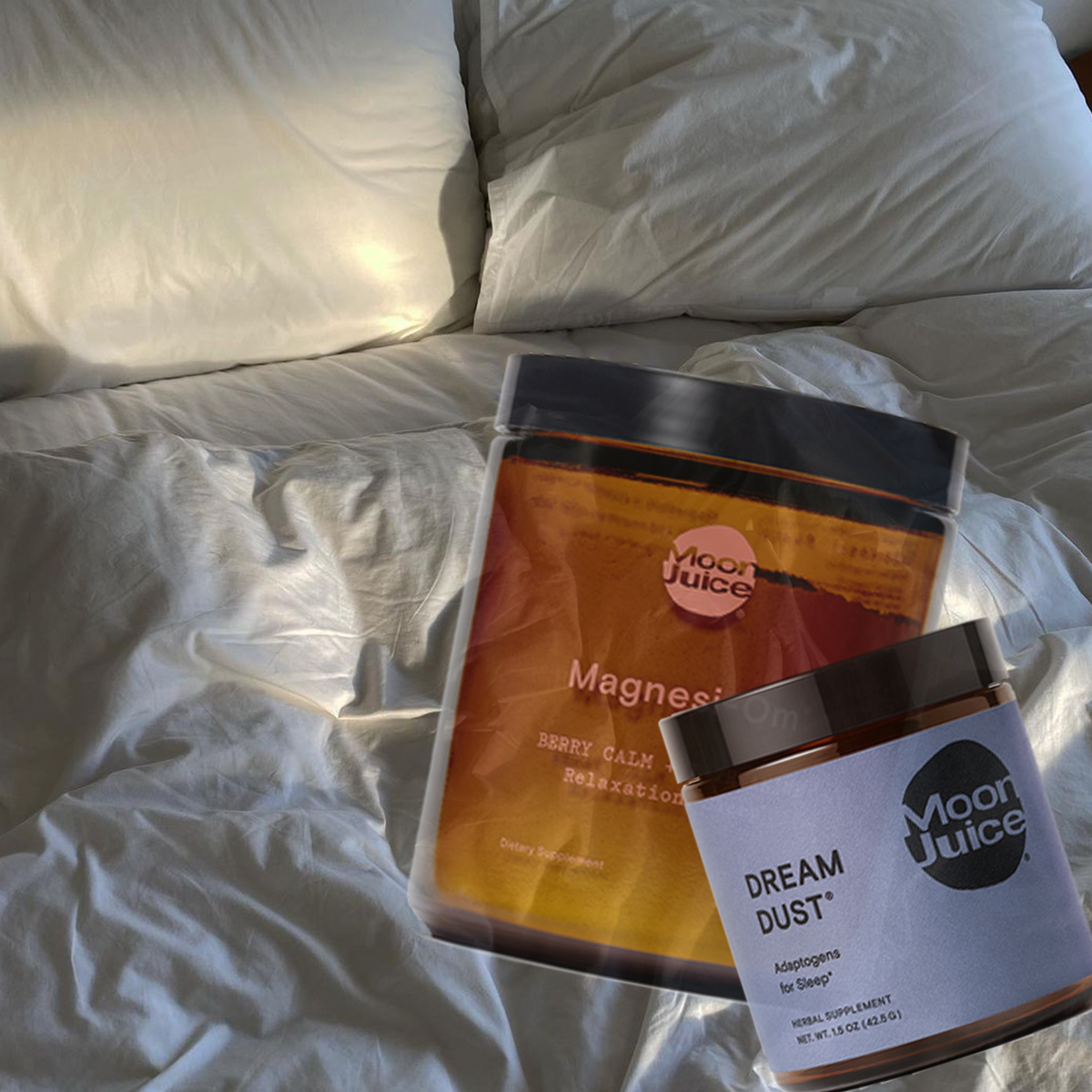 I'm 41 and Am Finally Prioritizing My Beauty Sleep—Here's My A+ Product Lineup
I'm 41 and Am Finally Prioritizing My Beauty Sleep—Here's My A+ Product LineupYou're going to want to get in on this.
By Marie Lodi
-
 The Celebs You Know and Love Swear By This Brand—These Items Are on My List
The Celebs You Know and Love Swear By This Brand—These Items Are on My ListI trust them.
By Aniyah Morinia
-
 20 Pieces That I Could Wear for Days on End
20 Pieces That I Could Wear for Days on EndThey're that comfortable.
By Anneliese Dominguez
-
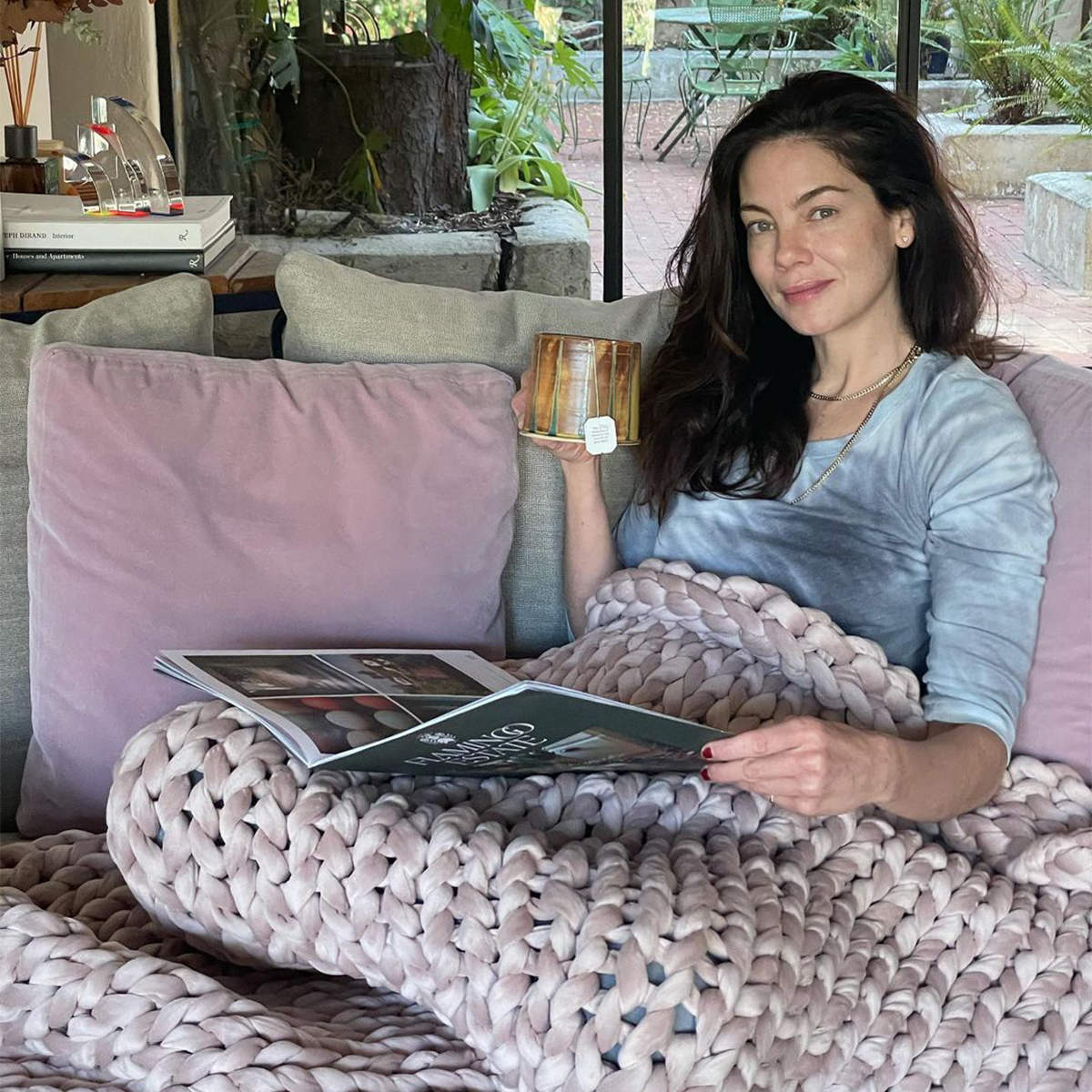 I Tried a Weighted Blanket, and Now I Know What 8 Hours of Sleep Feels Like
I Tried a Weighted Blanket, and Now I Know What 8 Hours of Sleep Feels LikeFinally.
By Erin Jahns
